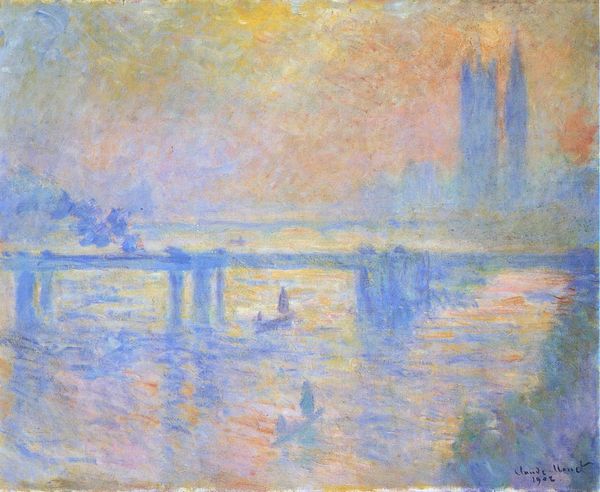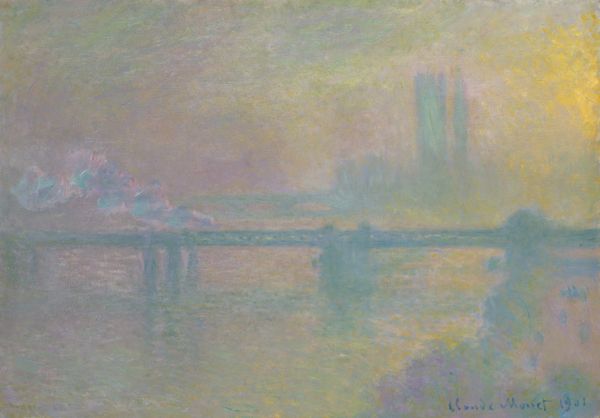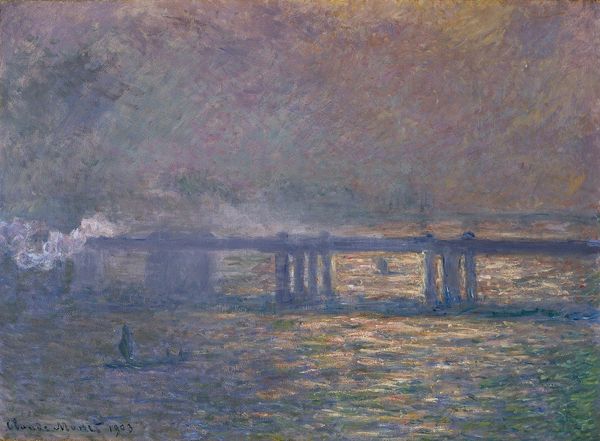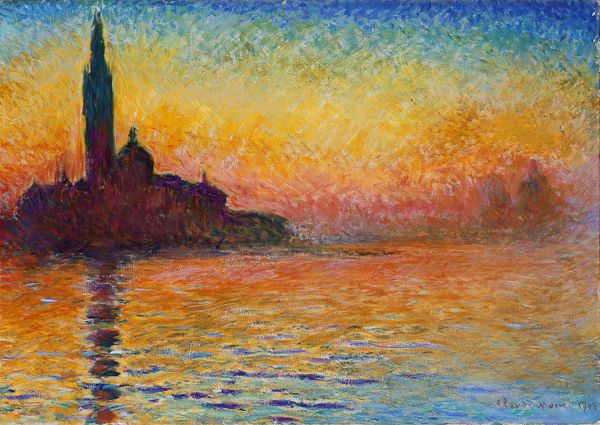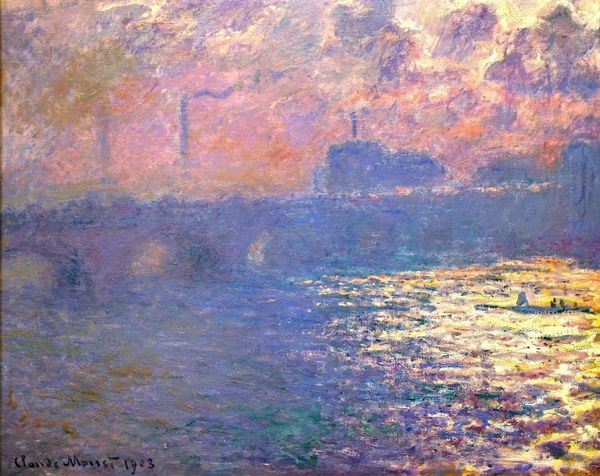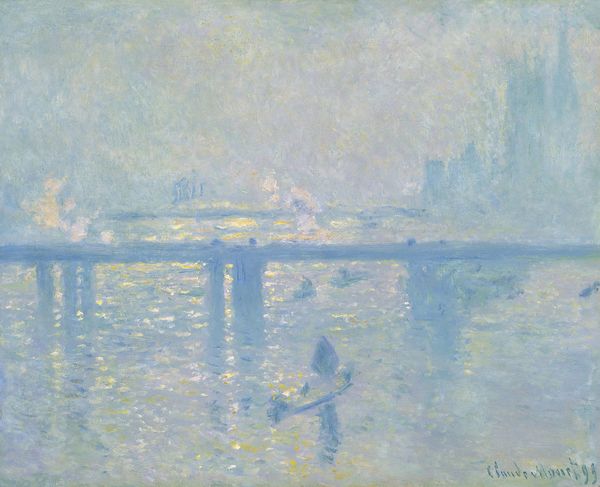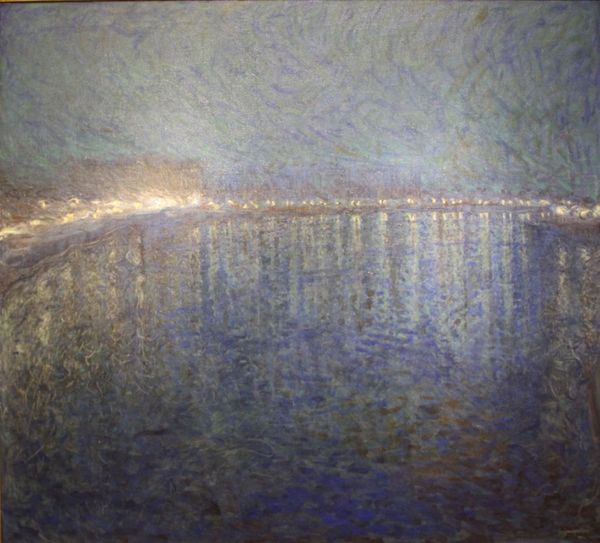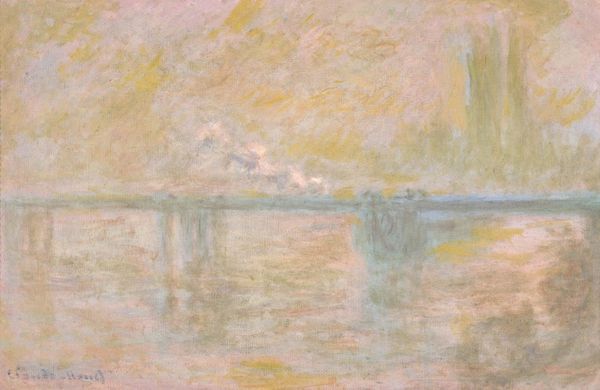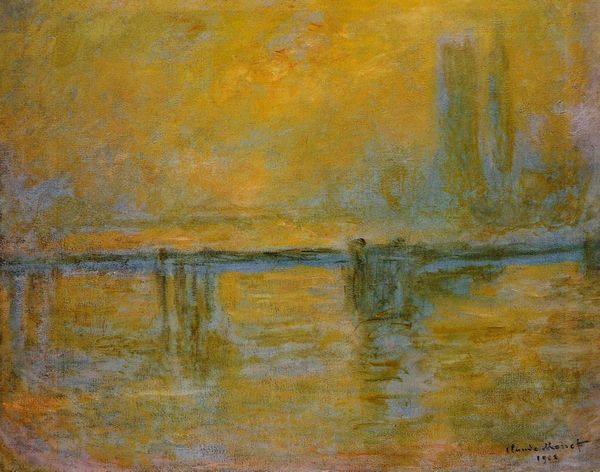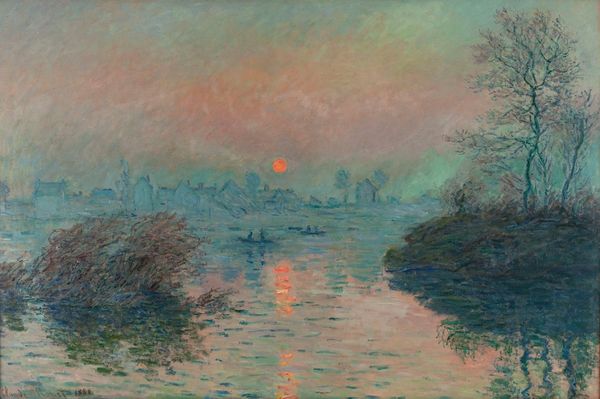
Copyright: Public domain
Claude Monet made this painting of Charing Cross Bridge with oil paint on canvas, though the exact date is unknown. The very qualities that define the work, its hazy atmosphere and ephemeral light effects, are achieved through a hands-on process. Thick daubs of paint are layered wet-on-wet, one carefully placed next to the other. This materiality is critical. Without the visible brushstrokes and impasto, the painting would lose its vibrancy. Monet's focus isn't on meticulous detail but on capturing the sensory experience of a scene. The labor involved isn't about rendering reality photographically, but about synthesizing it through color and texture. The work captures the dynamic energy of London, a powerful symbol of industrial progress. Monet’s painting elevates the sensory experience of a bustling, modern metropolis. By embracing the tactile qualities of paint, Monet blurs the lines between representation and abstraction. In doing so, he challenges the traditional hierarchy of art, where the idea often trumps the making.
Comments
mm almost 2 years ago
⋮
A wonderful crossing point of the river which I have known since schoolboy crossings to hear concerts on Southbank. And in later years it was the closest bridge to my place of work at 440 Strand
Join the conversation
Join millions of artists and users on Artera today and experience the ultimate creative platform.

